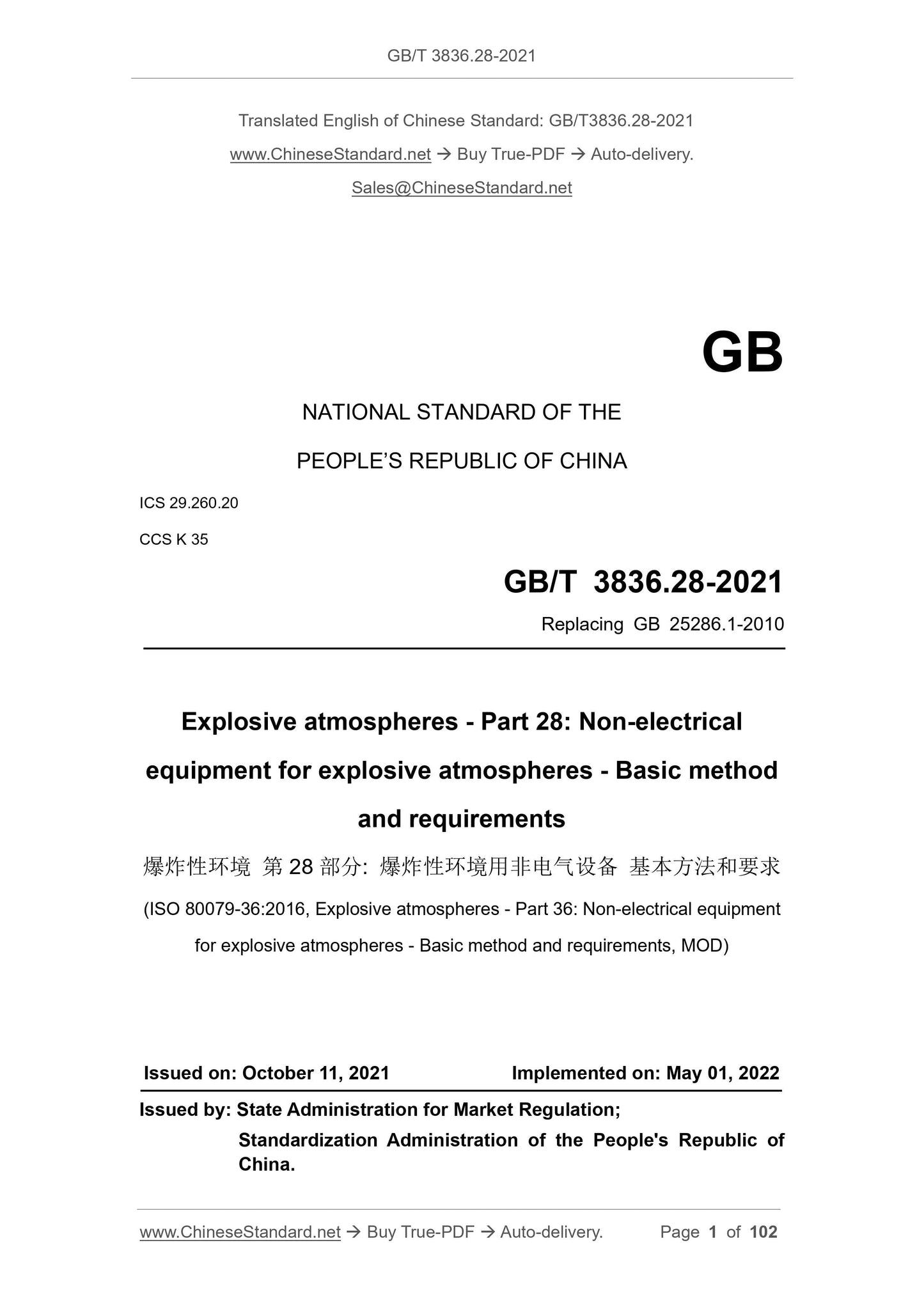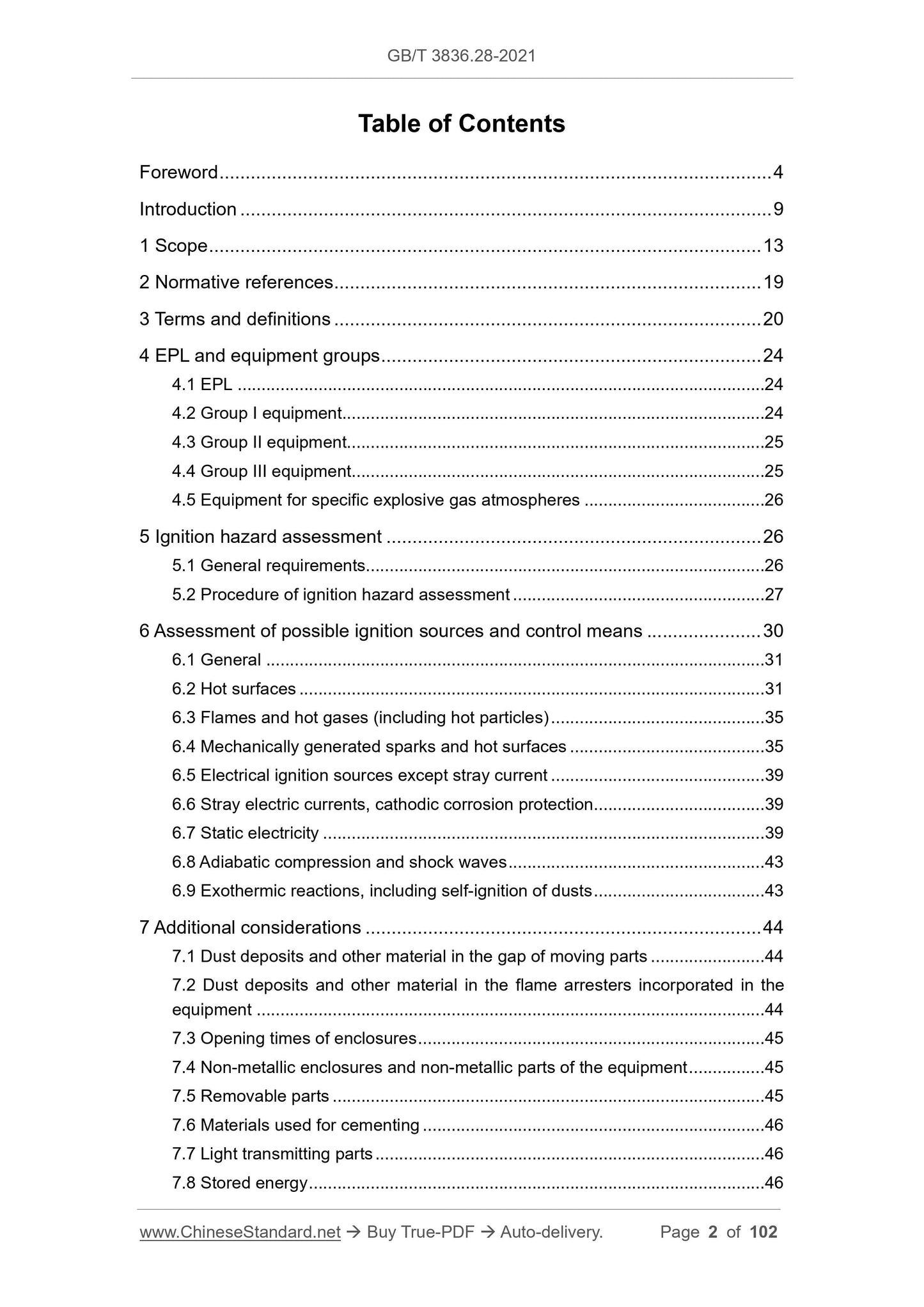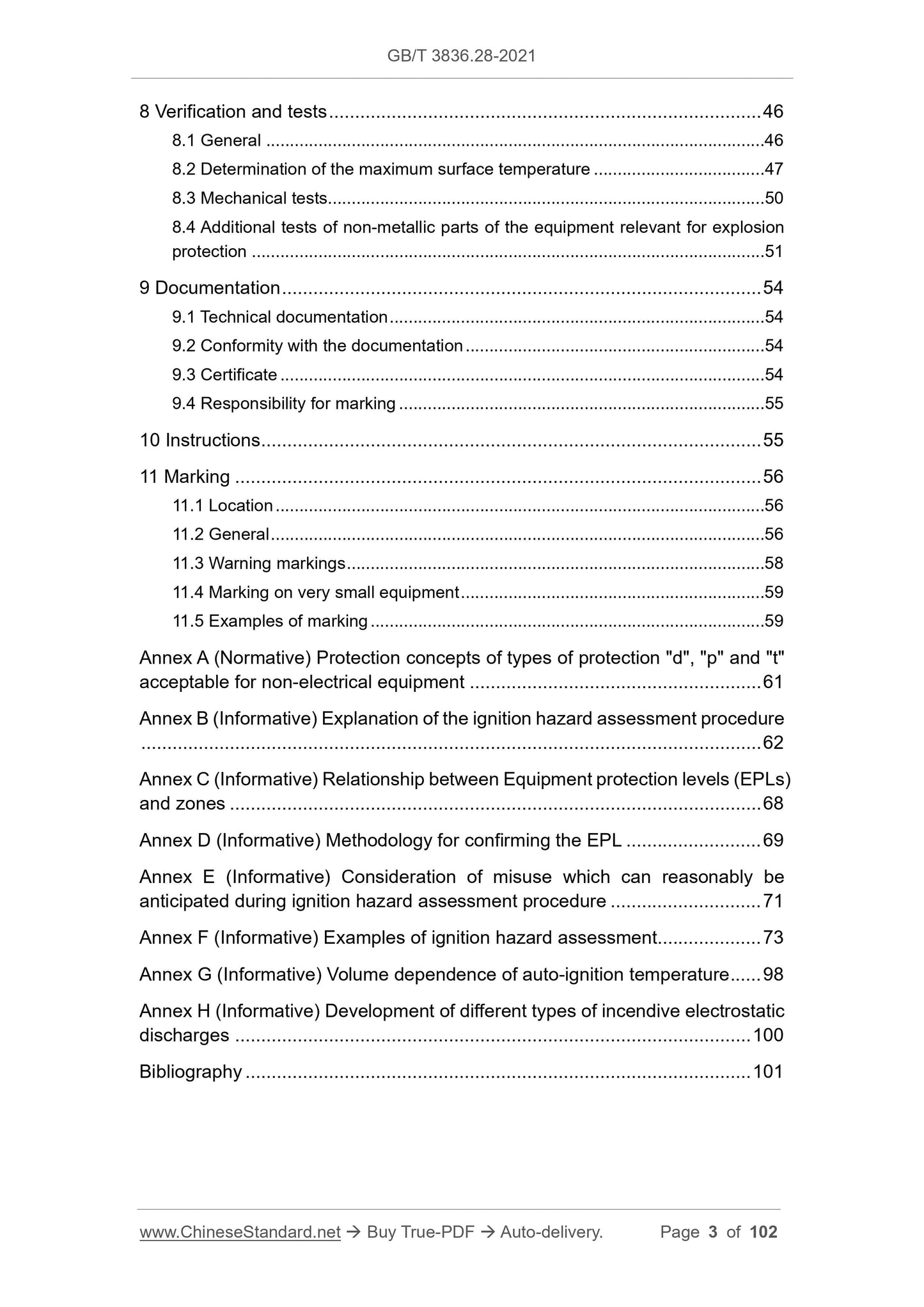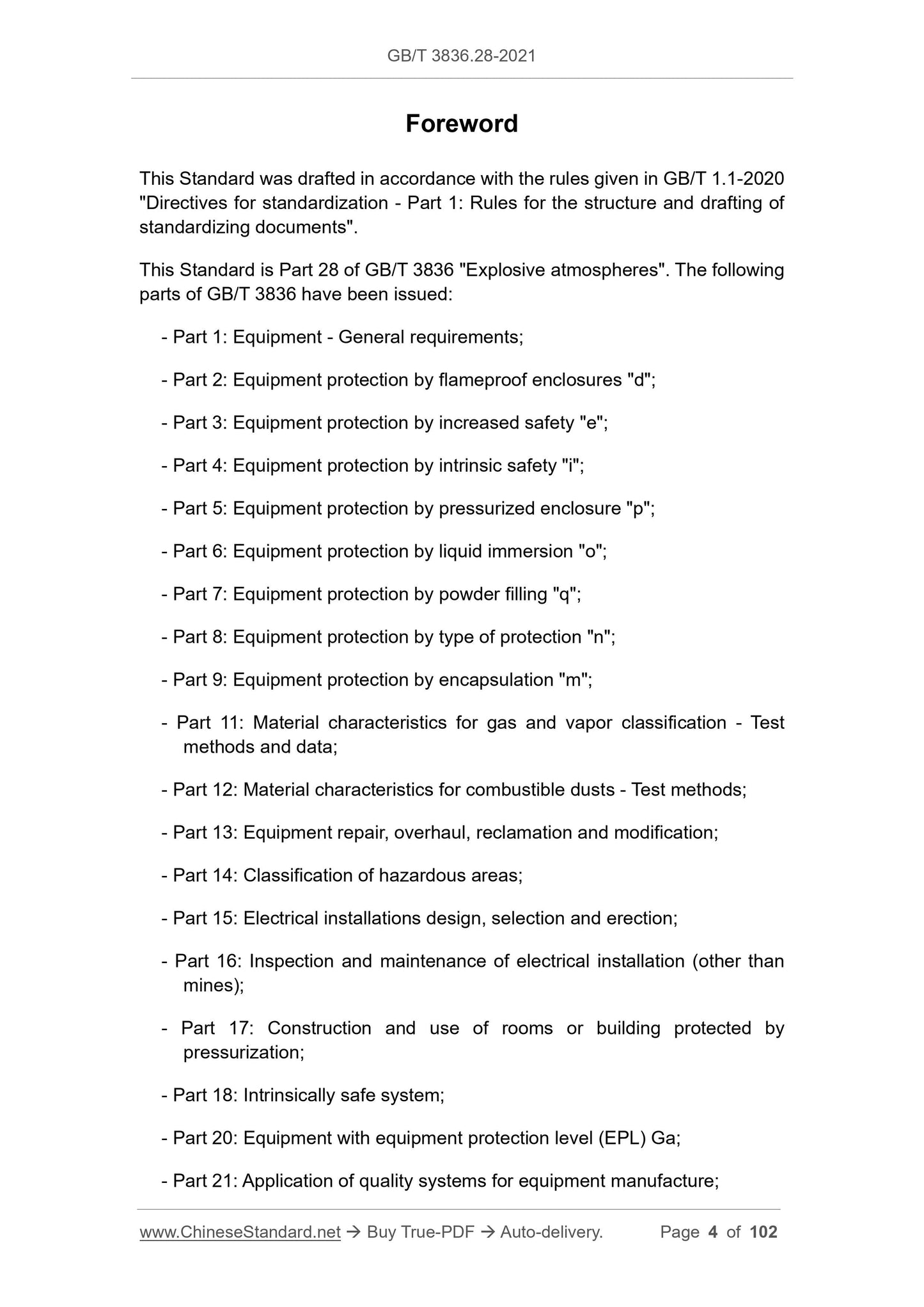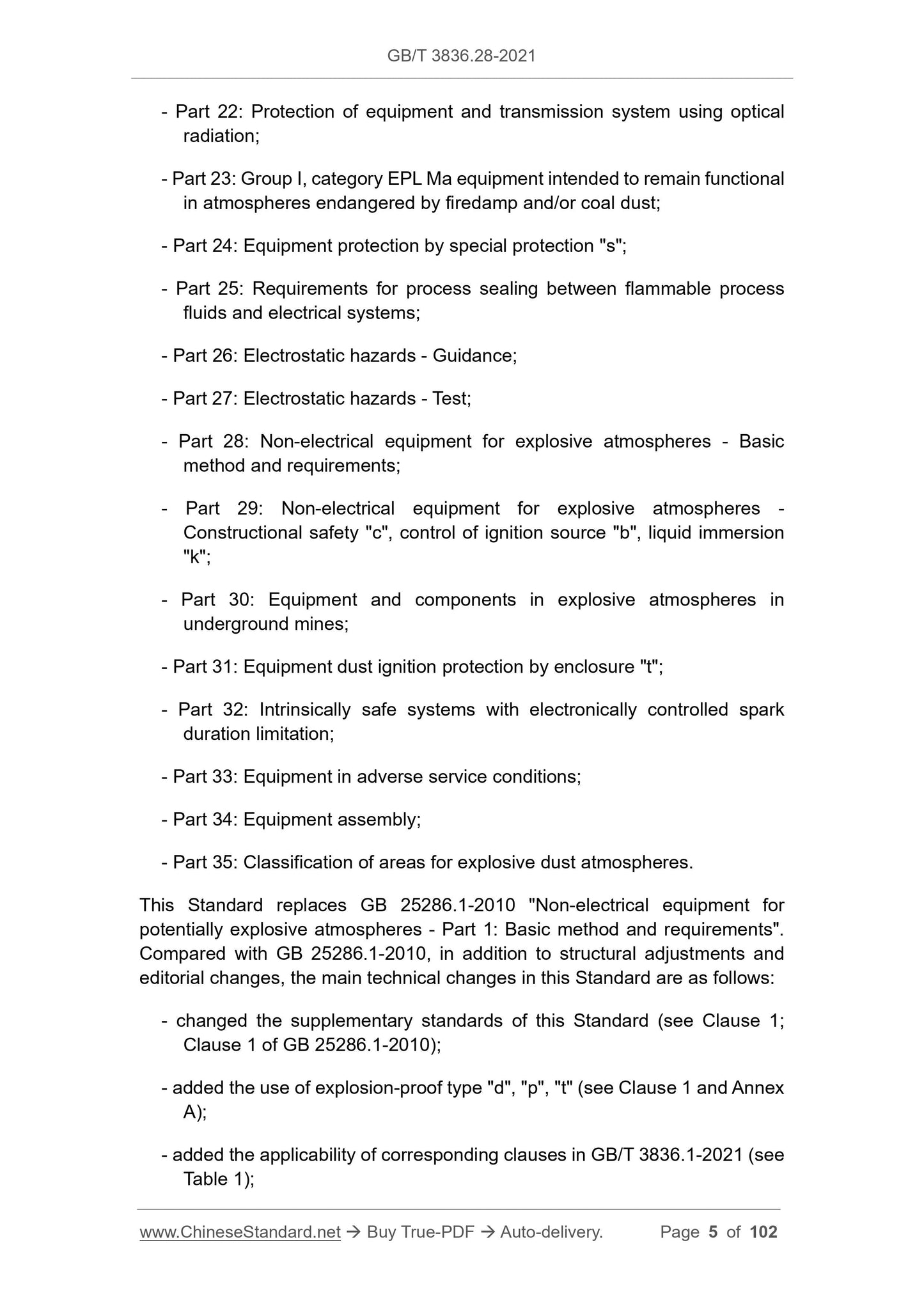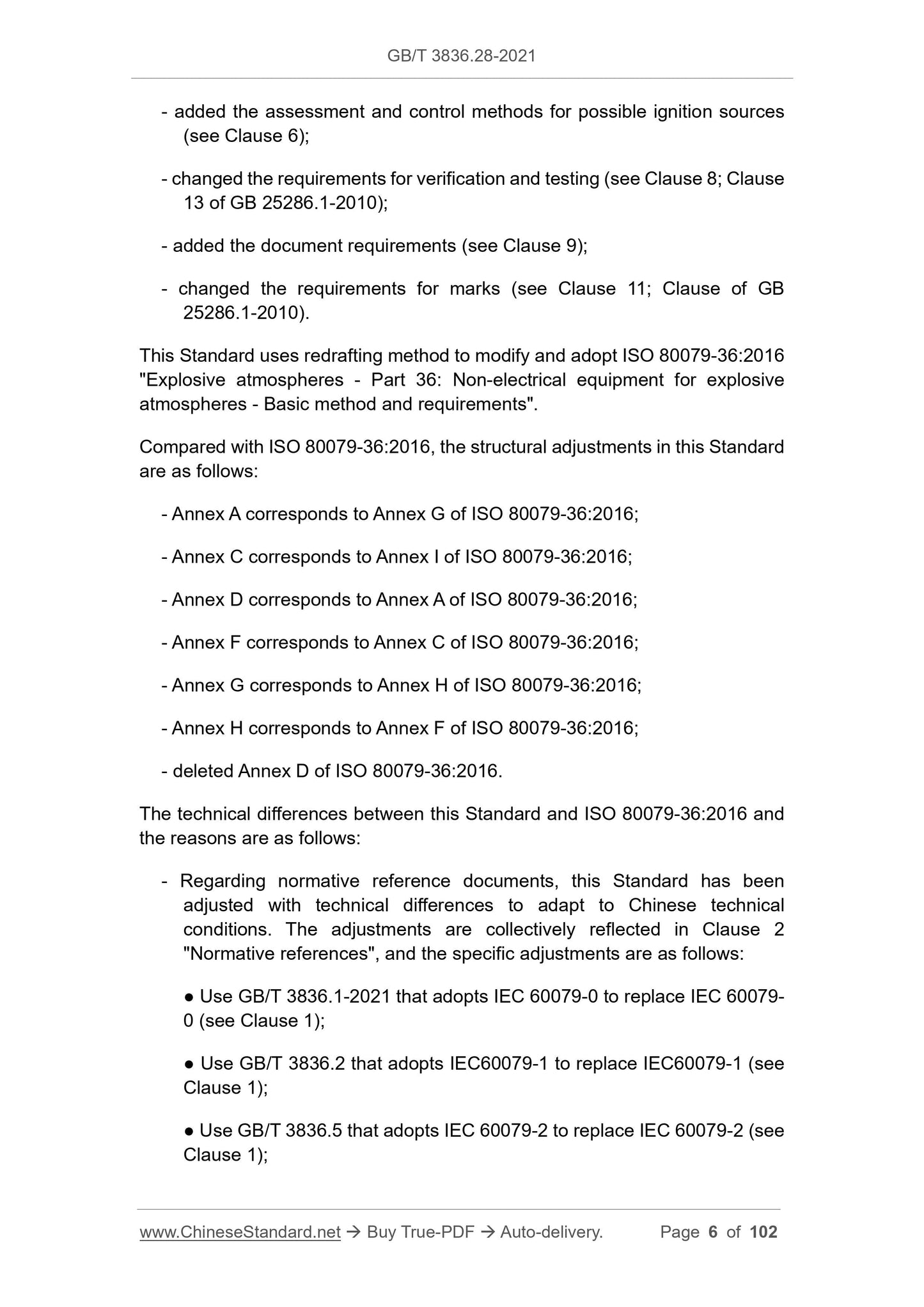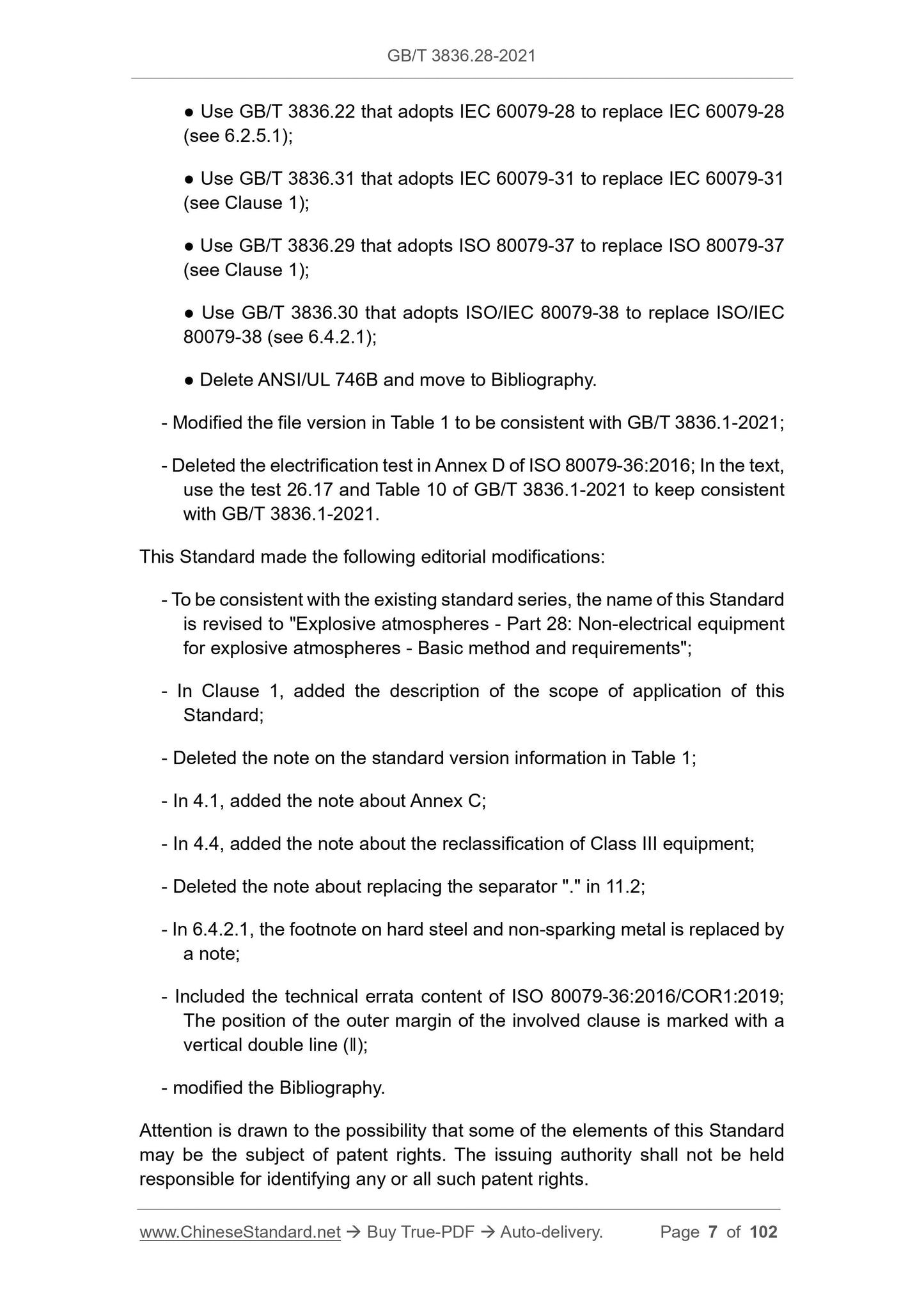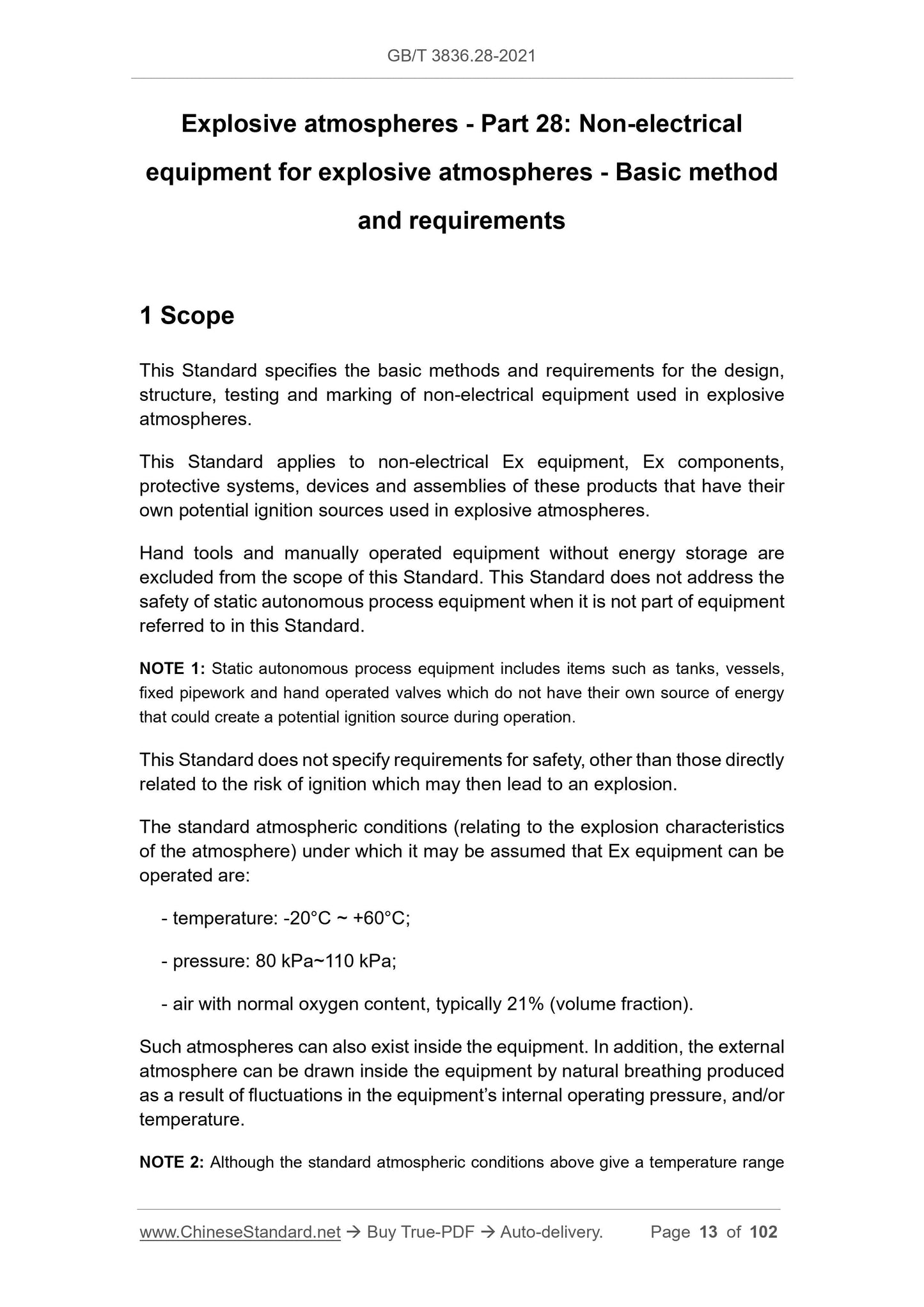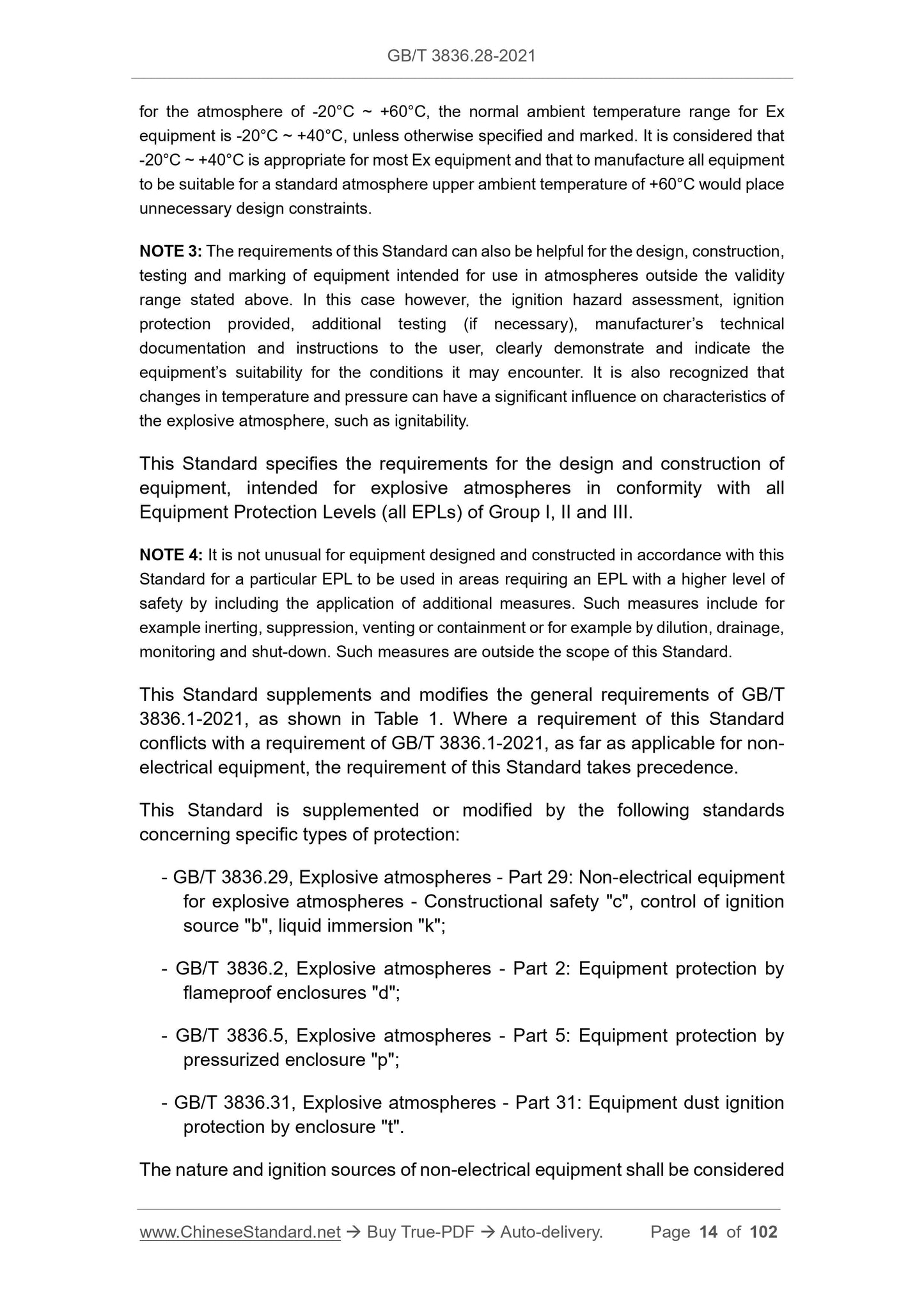1
/
of
9
www.ChineseStandard.us -- Field Test Asia Pte. Ltd.
GB/T 3836.28-2021 English PDF (GB/T3836.28-2021)
GB/T 3836.28-2021 English PDF (GB/T3836.28-2021)
Regular price
$1,055.00
Regular price
Sale price
$1,055.00
Unit price
/
per
Shipping calculated at checkout.
Couldn't load pickup availability
GB/T 3836.28-2021: Explosive atmospheres - Part 28: Non-electrical equipment for explosive atmospheres - Basic method and requirements
Delivery: 9 seconds. Download (and Email) true-PDF + Invoice.Get Quotation: Click GB/T 3836.28-2021 (Self-service in 1-minute)
Newer / historical versions: GB/T 3836.28-2021
Preview True-PDF
Scope
This Standard specifies the basic methods and requirements for the design,structure, testing and marking of non-electrical equipment used in explosive
atmospheres.
This Standard applies to non-electrical Ex equipment, Ex components,
protective systems, devices and assemblies of these products that have their
own potential ignition sources used in explosive atmospheres.
Hand tools and manually operated equipment without energy storage are
excluded from the scope of this Standard. This Standard does not address the
safety of static autonomous process equipment when it is not part of equipment
referred to in this Standard.
NOTE 1: Static autonomous process equipment includes items such as tanks, vessels,
fixed pipework and hand operated valves which do not have their own source of energy
that could create a potential ignition source during operation.
This Standard does not specify requirements for safety, other than those directly
related to the risk of ignition which may then lead to an explosion.
The standard atmospheric conditions (relating to the explosion characteristics
of the atmosphere) under which it may be assumed that Ex equipment can be
operated are:
- temperature: -20°C ~ +60°C;
- pressure: 80 kPa~110 kPa;
- air with normal oxygen content, typically 21% (volume fraction).
Such atmospheres can also exist inside the equipment. In addition, the external
atmosphere can be drawn inside the equipment by natural breathing produced
as a result of fluctuations in the equipment’s internal operating pressure, and/or
temperature.
NOTE 2: Although the standard atmospheric conditions above give a temperature range
for the atmosphere of -20°C ~ +60°C, the normal ambient temperature range for Ex
equipment is -20°C ~ +40°C, unless otherwise specified and marked. It is considered that
-20°C ~ +40°C is appropriate for most Ex equipment and that to manufacture all equipment
to be suitable for a standard atmosphere upper ambient temperature of +60°C would place
unnecessary design constraints.
NOTE 3: The requirements of this Standard can also be helpful for the design, construction,
testing and marking of equipment intended for use in atmospheres outside the validity
range stated above. In this case however, the ignition hazard assessment, ignition
protection provided, additional testing (if necessary), manufacturer’s technical
documentation and instructions to the user, clearly demonstrate and indicate the
equipment’s suitability for the conditions it may encounter. It is also recognized that
changes in temperature and pressure can have a significant influence on characteristics of
the explosive atmosphere, such as ignitability.
This Standard specifies the requirements for the design and construction of
equipment, intended for explosive atmospheres in conformity with all
Equipment Protection Levels (all EPLs) of Group I, II and III.
NOTE 4: It is not unusual for equipment designed and constructed in accordance with this
Standard for a particular EPL to be used in areas requiring an EPL with a higher level of
safety by including the application of additional measures. Such measures include for
example inerting, suppression, venting or containment or for example by dilution, drainage,
monitoring and shut-down. Such measures are outside the scope of this Standard.
This Standard supplements and modifies the general requirements of GB/T
3836.1-2021, as shown in Table 1. Where a requirement of this Standard
conflicts with a requirement of GB/T 3836.1-2021, as far as applicable for non-
electrical equipment, the requirement of this Standard takes precedence.
This Standard is supplemented or modified by the following standards
concerning specific types of protection:
- GB/T 3836.29, Explosive atmospheres - Part 29: Non-electrical equipment
for explosive atmospheres - Constructional safety "c", control of ignition
source "b", liquid immersion "k";
- GB/T 3836.2, Explosive atmospheres - Part 2: Equipment protection by
flameproof enclosures "d";
- GB/T 3836.5, Explosive atmospheres - Part 5: Equipment protection by
pressurized enclosure "p";
- GB/T 3836.31, Explosive atmospheres - Part 31: Equipment dust ignition
protection by enclosure "t".
The nature and ignition sources of non-electrical equipment shall be considered
Basic Data
| Standard ID | GB/T 3836.28-2021 (GB/T3836.28-2021) |
| Description (Translated English) | Explosive atmospheres - Part 28: Non-electrical equipment for explosive atmospheres - Basic method and requirements |
| Sector / Industry | National Standard (Recommended) |
| Classification of Chinese Standard | K35 |
| Word Count Estimation | 66,646 |
| Issuing agency(ies) | State Administration for Market Regulation, China National Standardization Administration |
Share
